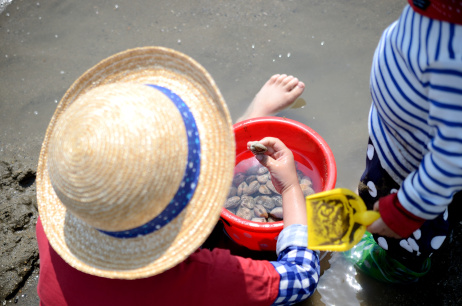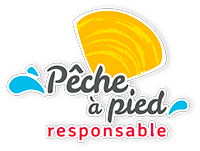Marine bivalve shellfish (e.g. oysters, mussels, cockles, palourde clams, wedge clams, etc.) filter large amounts of water for their physiological needs. When contaminants are present in the water and sediment (e.g. pathogenic micro-organisms, toxic micro-algae or other undesirable substances such as heavy metals or organic pollutants), the shellfish retain these contaminants and can become unfit for human consumption.
Shellfish collected by amateur shellfish gatherers and shellfish sold commercially do not present the same risks for the consumer.
Commercially harvested shellfish come from a professional industry and are subject to special controls (in the natural environment, at wholesalers and at retail outlets). Where necessary, they also undergo purification. All of these actions ensure the sanitary safety of shellfish sold commercially.
Conversely, shellfish collected by amateur shellfish gatherers are often eaten immediately after collection, either raw (such as with oysters), or after cooking for a short time (such as with mussels), which does not always minimise health risks. Young children, elderly persons, pregnant women and persons with weak immune systems are particularly vulnerable groups.
How is sanitary risk assessed ?
Sanitary risk is the probability of effects on health occurring after exposure to a source of contamination. The risk is proportional to the amount of contaminant ingested, to the toxicity of the contaminant ingested and the physiological condition and immune status of the consumer.

For shellfish, the risk also depends on the following factors :
- The type of shellfish gathered
Burrowing shellfish (cockles, palourde clams, Venus clams, etc.) present greater risks of contamination than non-burrowing shellfish (oysters, mussels), due to their feeding behaviour – they immerse themselves in sediment – and their physiology (their longer digestive tube means that contaminants are retained for a longer time)
- The duration and conditions of storage of the shellfish following gathering/picking
- The duration and conditions of storage of the shellfish following gathering
- The cooking of shellfish
The effectiveness of cooking varies in terms of eliminating pathogenic germs. Thorough cooking for a few minutes at 60°C ensures the extensive destruction of certain bacteria (E.coli, salmonella) and the major parasites, but is proven to be insufficient to effectively eliminate viruses, some other bacteria (Vibrio, for example) and biotoxins produced by marine phytoplankton.

